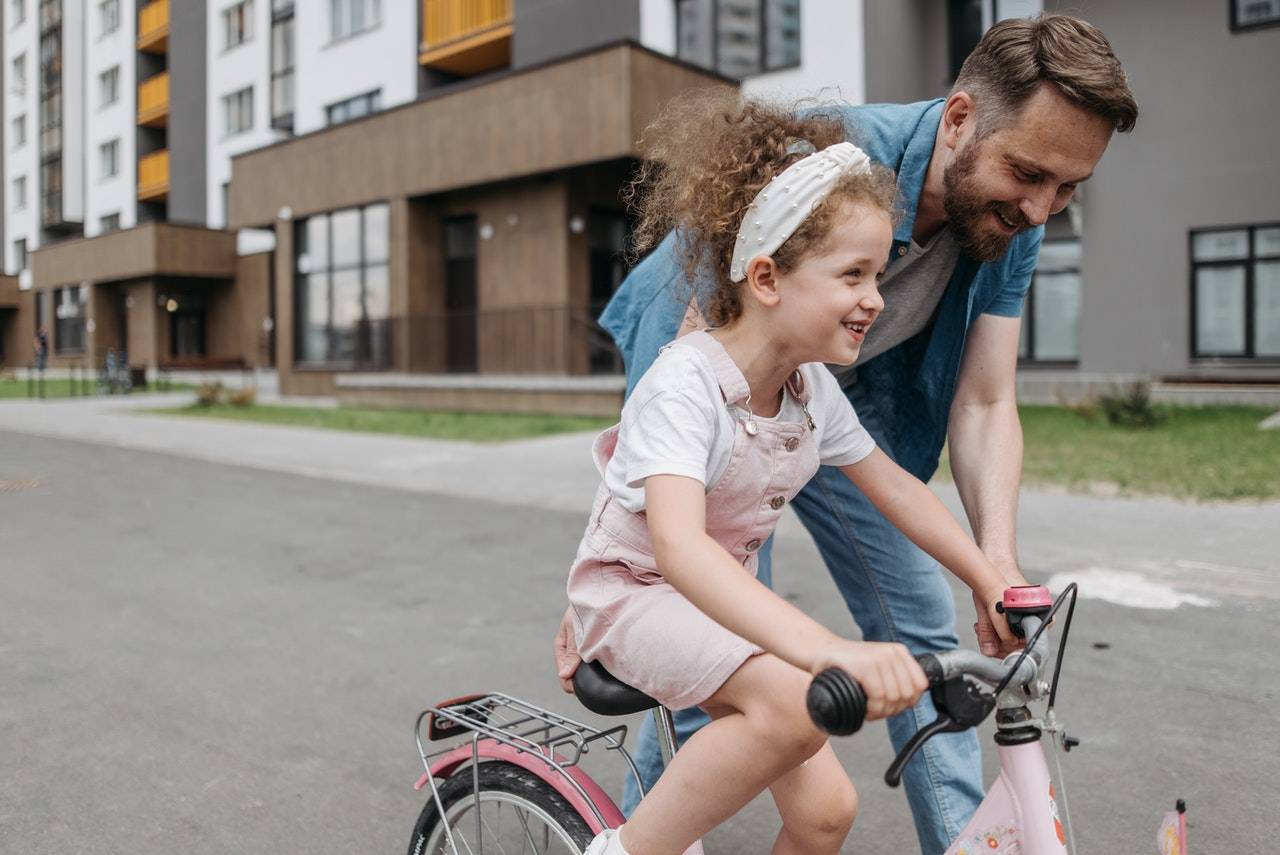Teaching Your Kids To Bike

The experience of riding without stabilizers or assistance can be daunting for a youngster (and their bike-crazed parents). However, there are actually hazards to avoid, so how can you teach a child how to ride once they have their first bike?
Getting a toddler started on a pedal bike is crucial by giving them a balance bike to ride during the first few months. They will learn how to ride the two-wheeler without pedaling and putting their feet down simultaneously.
It seems that children learn to ride using stabilizers, but choosing a balance bike as opposed to one with extra wheels would be more advantageous. The stability of the bicycle allows kids to steer and balance without leaning on the bike.
If you follow the steps below, you can get your youngster to ride a bike and go for excursions with you.
Getting Started
Most children are ready to start learning when they’re three to four years old. If they’re not prepared, it’s apparent immediately, and they won’t be able to rotate the pedals quickly.
Decide a suitable location
The choice of a suitable location is crucial during the first lesson. Choosing soft grass will make it easier to land on, but it’s harder to pedal.
The tarmac surface should be smooth, flat, and free from bumps to allow the child to build up some rolling momentum and provide ample room for walking away from traffic.
Set up the Bike
Make sure that the Child’s Bike is adjusted to suit the child. Don’t assume that they will grow into a bicycle that is too big for them. If they’re one to three years old, choose a tricycle; if they’re for or five, get them a starter bike; if they’re 6 to 8 years old, get them a 20-inch bike suitable for them. Once they grow older you can get matching electric bike kits and make it a routine to go on bike rides and spend quality time with your kid.
This makes pedaling difficult as the child may have knees that rise too high and interfere with steering when they sit on a saddle low enough for their flat feet to touch the ground. Regaining balance will be more complex as a result.
Since most children’s bicycles are sold based on their wheel size, we have compiled a list of the diameters of children’s bicycle wheels to help you select the right bike for your child.
Always be there for your Kid
The saddle and handlebars can be easily kept in place, but this will alter the way the bicycle leans and reacts to the rider’s weight.
It would help if you stood behind the Bike and Kid, so the rear wheel is between your calves and feet, and accommodate them with your hands under their armpits, so they have complete control over the Bike. This is also more comfortable for you!
Once they have learned to balance, let them ride free. You may gradually let go as they gain confidence, but be prepared to grab onto them if needed.
You can help guide their body as they lean and show them how to corner and make S-turns while you are behind them. If they’re ready, they’ll learn to ride within half an hour, as they’ll find their balance and pedal forward immediately.
Let them ride on their own
It is essential to use one foot for pedaling and the other for pushing off when taking off. Once the child has mastered pedaling forward and balancing, you can show them how to go independently.
As they push down on the pedal with their stronger foot at 2 o’clock, they should use their other foot to push down hard on the pedal while pushing down with the more substantial foot.
Braking is Important
It’s likely that your Kid on the Bike might not be interested in learning how brakes work. So, you might ask him or her to pull on the brake handles and see what happens.
As soon as they’ve mastered that, put them back on the bike and let them practice. If they’re straining the brake levers too hard, encourage them to squeeze them more slowly the first few times they use the equipment. They commonly stop appropriately, but they’ll forget to put down their feet – so be alert! Your Kid may get quite ahead of you, and you might miss him.
It takes time
They could have a difficult time learning to ride a bike at first, but once they’ve mastered it, they’ll enjoy it more than anything else. Practice is crucial to getting that skill, but remember that each child is different, so the right time may vary.
Even if you are eager for them to accompany you on rides, ensure that the experience doesn’t overwhelm them. Hopefully, your children will enjoy discovering their new skills and being independent.
A helmet should be worn, and cycling gloves to prevent scuffed hands. Tracksuit bottoms and long-sleeved shirts protect the arms and legs from minor cuts. Do not wear tights or shorts over your legs or arms since they may rub them instead. A better option would also be using boots or trainers rather than sandals.
Author Bio: In the beautiful mountain state of Nepal, Emma Johnson was born and raised in the capital city of Kathmandu. She considers biking and writing to be one of the most important parts of her life. When she’s not spending time with her bike, you can almost always find her around his sweet Labrador retriever, Franky.
